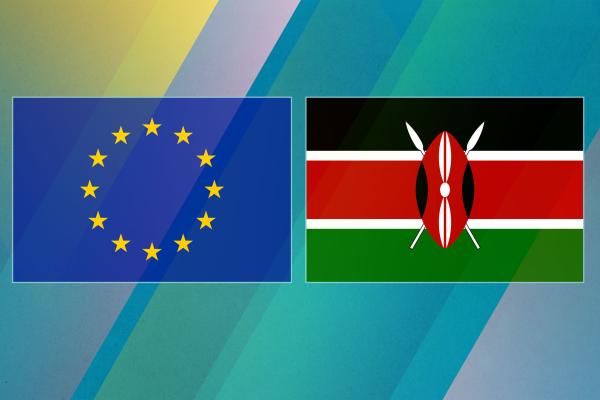- Country or region
- African, Caribbean, Pacific (ACP)
- East African Community (EAC)
- Trade topics
- Economic Partnerships
- Negotiations and agreements
- Trade policy
The East African Community (Burundi, Kenya, Rwanda, Tanzania, and Uganda)* finalised negotiations for an Economic Partnership Agreement (EPA) with the EU on 16 October 2014.
The European Commission submitted a proposal for conclusion, signature and provisional application of the full EPA with the East African Community (EAC) to the Council in February 2016.
Kenya and Rwanda signed the EPA in September 2016, and Kenya ratified it. However, the EPA could not be applied as it required signature and ratification by all the EAC countries.
Upon the request of Kenya and based on the EAC Summit decision of February 2021 to move forward under 'variable geometry', the EU and Kenya engaged on 17 February 2022 to advance on the bilateral implementation of the EU-EAC EPA, with the addition of trade and sustainable development provisions.
The EPA between the EU and Kenya was signed on 18 December 2023 in Nairobi and entered into force on 1 July 2024. It made the necessary adjustments for the bilateral implementation of the regional EPA by an individual EAC member and is open for other EAC countries to join in the future.
The EPA provides a platform to support job creation on both sides, along with targeted cooperation to enhance Kenya's economic development. It is the most ambitious trade deal ever signed by the EU with a developing country, in terms of sustainability provisions such as climate and environmental protection, labour rights, and gender equality.
*South Sudan became the sixth member of the EAC in September 2016.
Trade picture
- Total trade between the EU and the countries of the East African Community amounted to €7.7 billion in 2024.
- The EU is the EAC’s fourth-largest trading partner and its second-largest export market after the United Arab Emirates.
- Exports to the EU from the East African Community are mainly coffee, cut flowers, avocados, tobacco, cocoa beans and fish fillets.
- Imports from the EU into the region are dominated by machinery and appliances, chemicals, foodstuffs and wood products.
- Kenya, with which the EU is implementing an Economic Partnership Agreement since July 2024, is the EU’s largest trade partner in the region, accounting for 43% of the EU’s total trade and 45% of investment in East African countries.
The EU and the East African Community
Burundi, Rwanda, Tanzania and Uganda are on the UN’s list of Least Developed Countries (LDCs), while Kenya is a non-LDC.
The countries in the East African Community are members of the WTO, with the exception of South Sudan.
Trading with the East African Community
- Importing into the EU from the East African Community
- EU trade defence measures on imports from the East African Community
- Exporting from the EU to the East African Community
- Trade relations are part of the EU's overall political and economic relations with Kenya, Uganda, Tanzania, Burundi, and Rwanda
Latest news
A joint statement published by the European Union and Kenya on the implementation of the Economic Partnership Agreement (EPA).
Today, the EU-Angola Sustainable Investment Facilitation Agreement (SIFA) has entered into force. This is the first-ever EU agreement on investment facilitation. It aims to stimulate foreign investments needed to achieve sustainable development goals.
Today, the EU-Kenya Economic Partnership Agreement (EPA) entered into force, representing a key milestone in the EU-Kenya Strategic Partnership.

